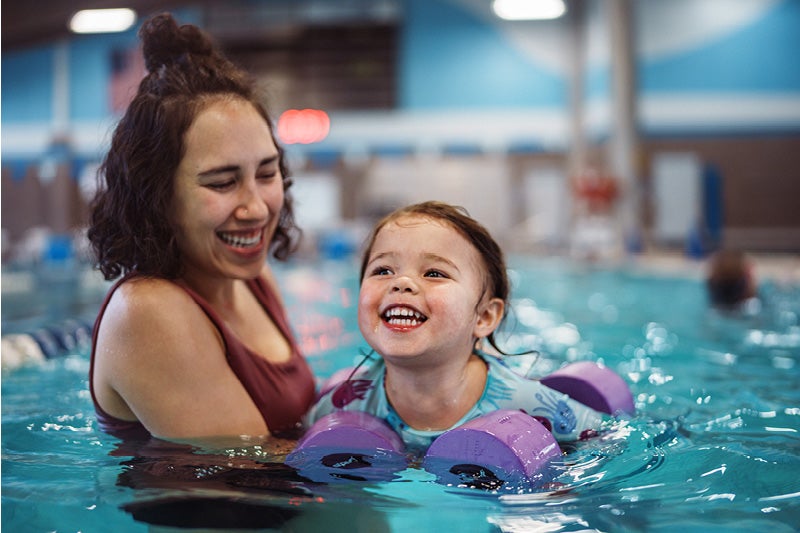
Overview: Water safety at home and away is vital for everyone, but particularly for children. Even though it may seem like common sense, take time to review our water safety tips before you head out to swim or boat.
Water safety is important no matter your age, but it's vital for children. As their caregiver, you’re responsible for a young person’s safety. Drowning is the leading cause of death of children ages one to four in the U.S and 3,400 people drown each year, according to Stop Drowning Now. Before heading to a pool, lake or river, take time to prepare yourself and your loved ones for water safety.
10 water safety tips
- Never leave a child unattended by any body of water, including the bathtub. No one should swim in an open body of water alone.
- Know CPR, first aid and water rescue techniques. When your children are swimming, always have a phone handy and rescue equipment readily available.
- Have a designated watcher who can swim when near bodies of water with children. Teach children not to panic in the water and to raise their hand and yell for help if needed.
- Learn to swim. This reduces the risk of drowning by 88%, so sign your children up for swimming lessons as soon as possible.
- Take precautions with pools at home. Install fencing and security devices, including locks, alarms and motion detectors. Remove toys from the pool when you’ve finished swimming, as well as ladders from above-ground pools. Make sure to empty and deflate inflatable/temporary pools after use. If a child is missing, check your pool first.
- Use life jackets when boating at all times.
- Look before you leap. Never dive into unknown waters.
- Lifeguards increase water safety. When possible, swim in areas with a lifeguard.
- Beware of fast-moving water. Educate yourself and your children about fast-moving waters and the dangers of swimming in those areas.
- Follow rules. Make sure your children know and follow any rules that are posted around swimming areas.
Also, be aware of surfaces in places like lakes, ponds and rivers, in case they are uneven or slippery. Additionally, check the weather before heading out on a boat, as you do not want to get caught out on the water in a storm.
Remember S.P.L.A.S.H.
The acronym S.P.L.A.S.H. sums up the 10 tips listed above and offers an easy way to remember safety around water.
S: Safety fencing
P: Put away toys/ladders
L: Life jackets
A: Adult always watching
S: Swim lessons
H: How to help
Prevention to-dos for parents
As a parent or caregiver, it's extremely important to know how to swim and to teacher your children how to swim yourself or through a community program.
- Educate your children about water safety in a pool or other bodies of water. A child who can’t swim well should wear a life jacket, and there needs to be an adult present who can swim.
- Take home pool precautions. If you have a pool at your home, take every precaution to ensure the safety of your children and any visitors who come to your home. According to the National Drowning Prevention Alliance, most drownings happen in residential pools each year.
- Boat safely. Understand the rules of the waterway and don’t drink alcohol and boat. Driving a boat while intoxicated is illegal, and swimming while intoxicated is dangerous.
- Take water safety seriously. Even the most experienced swimmer needs to take safety precautions around water, as drownings may occur from slipping, falling and being too injured to swim.
Help ensure your family is always safe when enjoying fun in and on the water. MercyOne Pediatrics Care is here for you and wants to ensure all children are safe from harm in and around water.
